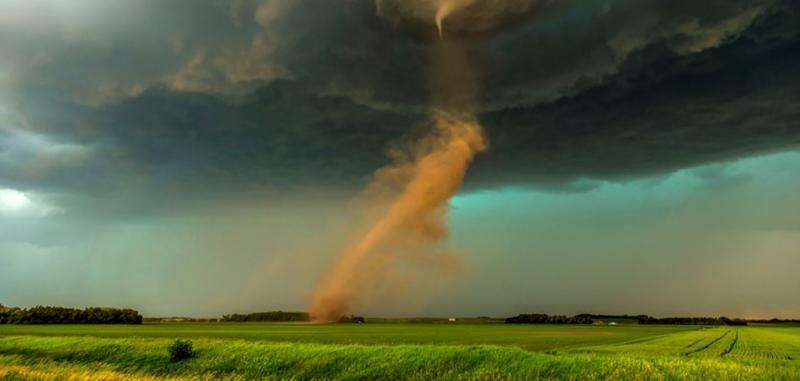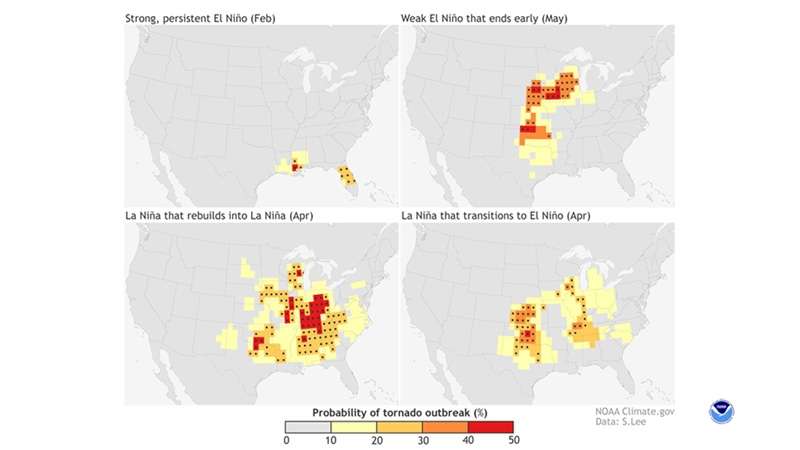Today, we predict tornado outbreaks up to seven days in advance. But, new research holds the promise that sea surface temperatures thousands of miles away may help us predict tornado outbreaks as soon as one to three months ahead.
"This is very exciting research because it can have a direct impact on saving people's lives and minimizing damages," said Sang-Ki Lee of NOAA's Atlantic Oceanographic and Meteorological Lab, the lead author of the new studyoffsite link appearing online in Environmental Research Letters. "Extending our severe weather outlooks beyond seven days will give communities much needed time to prepare."
Lee, whose previous research focused on large-scale ocean phenomenon, dived into tornado research shortly after our nation's deadliest tornado outbreak in 2011. That spring, tornadoes took the lives of 553 people, leaving $28 billion in damages.
Changes of tornado outbreak by spring ENSO phase and month of greatest impact. Credit: NOAA
Scientists at NOAA noticed the extreme outbreak in 2011 coincided with a strong La Niña in the Pacific Ocean and wondered if there was a connection. Lee volunteered to dig further for an answer.
Examining historic data on tornadoes and El Niño and La Niña, he and his colleagues found a high probability of tornado outbreaks occurring in distinct regions for each of the four dominant spring patterns of El Niño and La Niña variations. Learn more about the research and see maps depicting what the research tells us about regional tornado patterns.
More information: US regional tornado outbreaks and their links to spring ENSO phases and North Atlantic SST variability: iopscience.iop.org/article/10. … 326/11/4/044008/meta
Journal information: Environmental Research Letters
Provided by NOAA Headquarters
























